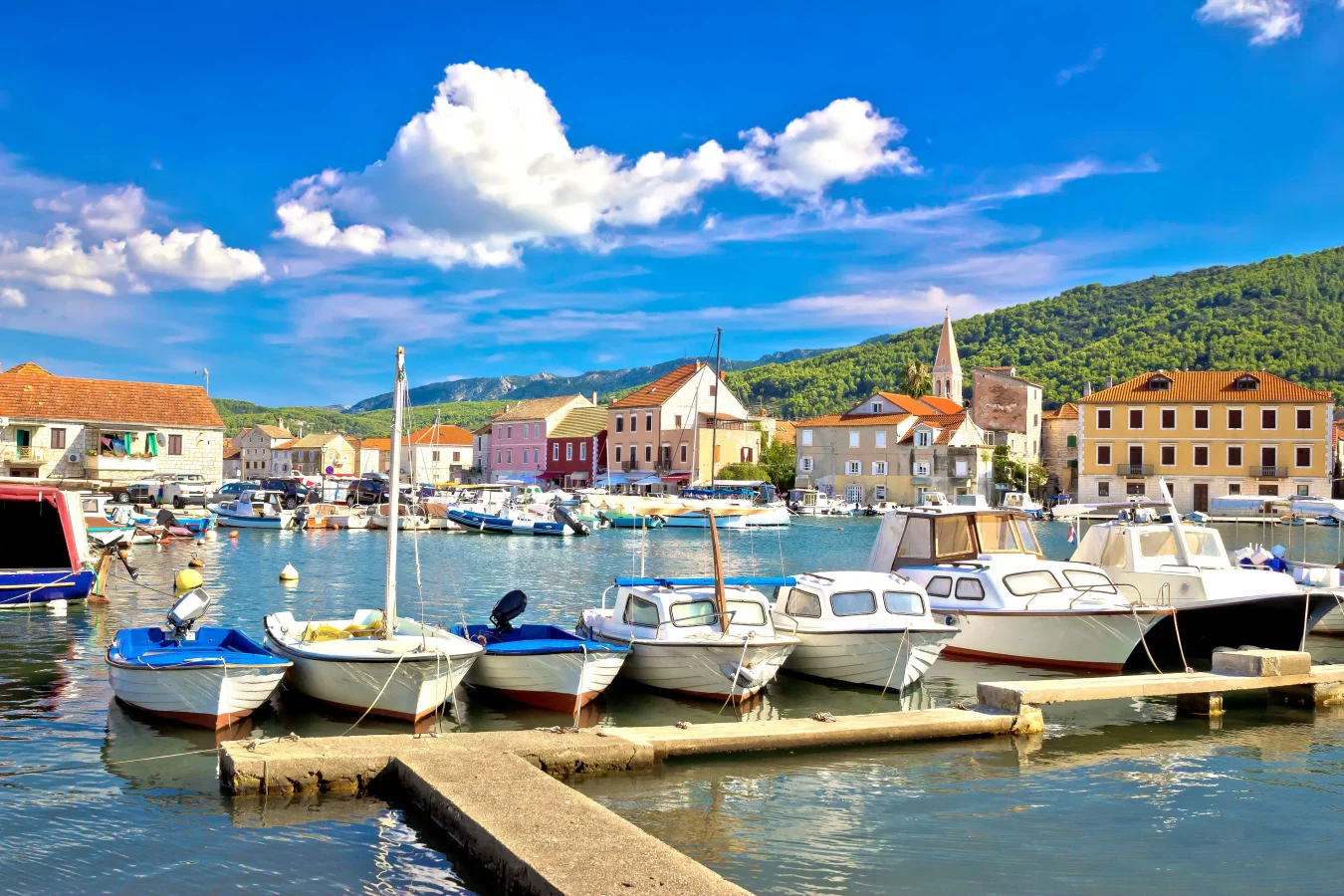As you traverse the winding streets of picturesque towns like Rovinj or Poreč, you may find yourself marvelling at how swiftly the breeze can shift from a gentle caress to fierce gusts of the sea.
The Mediterranean climate graces Istria with long hours of sunshine throughout most of the year. Yet don’t be fooled by its sunny disposition.
Istria’s weather can also surprise you with sudden bursts of rain or dramatic thunderstorms that punctuate tranquil afternoons. So if you’re considering going to Istria, make sure to check out all our tips for travelling to Istria to have a smooth journey.
Istria’s climate overview
But wait, where is Istria? Istria is located on the Adriatic coast of Croatia, and it boasts a Mediterranean climate that is characterized by hot, dry summers and mild, wet winters.
The region experiences an average of 2,400 hours of sunshine per year, making it an ideal destination for those seeking warm weather and sunny days.
The summer months of June to August see temperatures ranging from 23°C to 31°C, perfect for sunbathing and enjoying the crystal-clear waters of the Adriatic Sea.
In contrast, the winter months from December to February bring cooler temperatures and occasional rainfall, with average highs ranging from -2°C to 9°C.
Visitors have an opportunity to discover Istria’s picturesque towns and villages without being overwhelmed by crowds during peak tourist season.
However, what makes Istria unique in terms of climate is its microclimates which vary considerably depending on where one lives in Istria. As an example, coastal regions tend to be warmer and drier compared to inland regions, where higher elevations bring cooler temperatures and increased precipitation.
Microclimate diversity adds to the beauty of this region while creating opportunities for various agricultural activities, including winemaking and olive oil production.

Weather in autumn and spring
As autumn brings cooler temperatures and an added crispness to Istria, temperatures start gradually falling off.
In September and October, average temperatures range from 15°C to 20°C making them ideal for outdoor activities such as hiking or exploring picturesque villages. As November draws near, however, temperatures tend to drop even lower until they settle at approximately 10°C – creating the ideal atmosphere for enjoying warm cups of mulled wine beside a cozy fireplace.
As soon as spring arrives in Istria, nature awakens from its winter nap with an explosion of vibrant colours and delicious scents. March temperatures typically range from 10°C to 15°C as wildflowers and greenery begin to blossom across the landscape.
By April and May, temperatures increase steadily to between 15 and 20 °C during sunny days – inviting locals and visitors alike to soak up this gentle warmth by strolling along coastal towns.
Planning your visit
If Istria is popping up on your for you page, you might be wondering why visit Istria.
There are many reasons, some of them being its amazing gastronomy, beautiful landscape and welcoming people.
And when you’re here, you can absolutely not miss the opportunity to indulge in the region’s gastronomy, with fresh seafood dishes made by the best fish restaurants and truffle-infused specialities being highlights of Istrian cuisine. Did you know that you can also take truffle tours and even cook truffles that you found?
After indulging in delicious food, consider taking a day trip to one of Istrian’s many vineyards where world-class wines await, all while admiring its rolling hills and vineyards.
Head inland for an immersive Istria experience; charming hilltop villages like Motovun or Groznjan offer charming hilltop experiences where you can learn more about Istria’s rich history and regional traditions.
Istria offers visitors many activities to take pleasure in, from hiking along rugged coastal paths to cycling across countryside paths.

Best time for sunshine
As soon as the sun rises, people are treated to breathtaking vistas and warm rays that create memories for years.
Istria offers ample opportunity for outdoor activity during its warm, sun-kissed months of June to August when the days are long and the weather is ideal for enjoying its beauty.
Avoiding the crowds
If you are looking to escape crowded tourist areas while still enjoying ample sunlight, consider visiting Istria during the shoulder seasons of spring (April-May) and fall (September-October).
During these times, sunny days are abundant without scorching temperatures, making it ideal for strolls through picturesque vineyards or cycling along serene coastal paths.
You can travel through Istria by your own rules, however, make sure to respect the rules by the owners of your rented villa. We can already imagine ourselves in villas in Istria. Relaxing in a jacuzzi, watching the beautiful Adriatic scenery. And what about you?
What to pack?
Pack comfortable walking shoes when visiting Istria; its landscape lends itself well to exploring on foot.
Given the cobblestone streets, take time to appreciate and experience all their charm while wearing something comfortable for exploration.
Keep yourself hydrated on all of your adventures by packing a reusable water bottle to stay hydrated, especially if hiking or cycling through Istria’s stunning nature reserves. This applies regardless of season.
Essentials for summer
Pack good quality sunscreen when travelling to Istria; with plenty of sunny days throughout the year and strong Mediterranean sun rays beating down on you from above, protecting your skin is of utmost importance.
Besides sunscreen, consider packing a lightweight scarf or shawl to easily put on in case the evening temperature dips while walking along the coastline or visiting historical sites like Pula’s Roman Amphitheatre.
An essential piece like this will add style and versatility to your outfits while fitting right in with Istria’s fashion sensibilities.
Winter wear checklist
Pack clothing that will ensure that you remain warm and cosy on your Istria winter getaways.
Layering up is key when staying cosy in this region; start by wearing thermal underwear that keeps heat close to your core, followed up with cosy sweaters or fleece for additional insulation, and don’t forget your waterproof jacket to provide shelter against rain or snow!
Pack essential accessories when travelling to Istria during winter: a warm hat, gloves, scarf and sturdy boots are essential components to staying comfortable outdoors while exploring outdoor attractions.